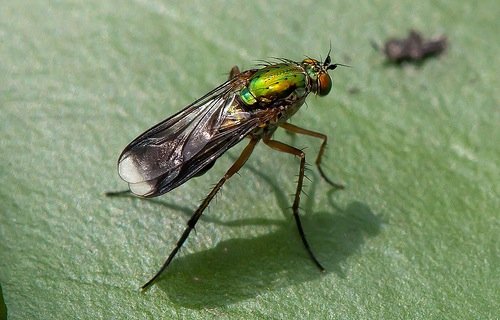It’s tempting to just concentrate on the showiest insect families — butterflies, moths, beetles, dragonflies — at the expense of the incredible variety of flies, bugs, fleas, ants, termites, cockroaches and so on.
But let’s have at least one fly. There are lots of things with ‘fly’ in the name — butterfly, caddisfly, scorpionfly and so on — but the true flies, the diptera, are the ones with just one pair of wings: house flies, bluebottles, mosquitoes, gnats, midges, craneflies, horse flies, hoverflies and so on.
This particular fly is Poecilobothrus nobilitatus.

You can see that it’s a bit prettier than some fly species, but it’s not exactly a showstopper.
So why I have I picked it for my advent calendar? Because it dances.
This video was taken at my garden pond, in June, three years ago (I think it’s the right species!). Look particularly in the top right corner.
You can see a couple of males flashing their wings towards a female. OK, it’s not the most dramatic courtship display in nature, it doesn’t compare to birds of paradise or capercaillies; but still, it’s a neat thing to find in a suburban garden, all these little flies earnestly lekking on the lily pads.
» Langbeinfliege Poecilobothrus nobilitatus 110615 005.jpg is © Jürgen Mangelsdorf and used under a CC by-nc-nd licence.



